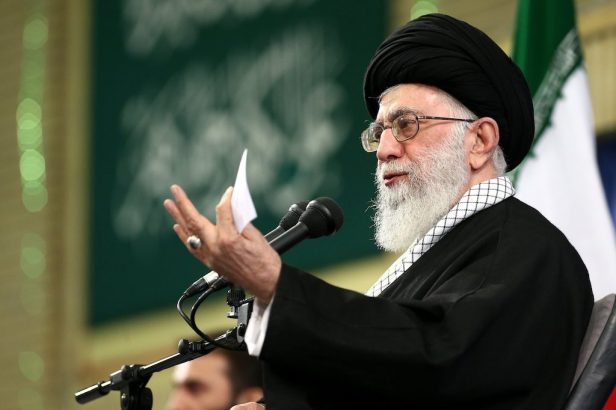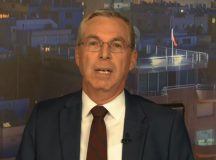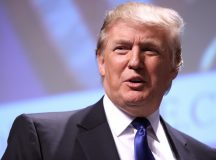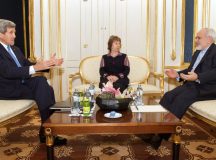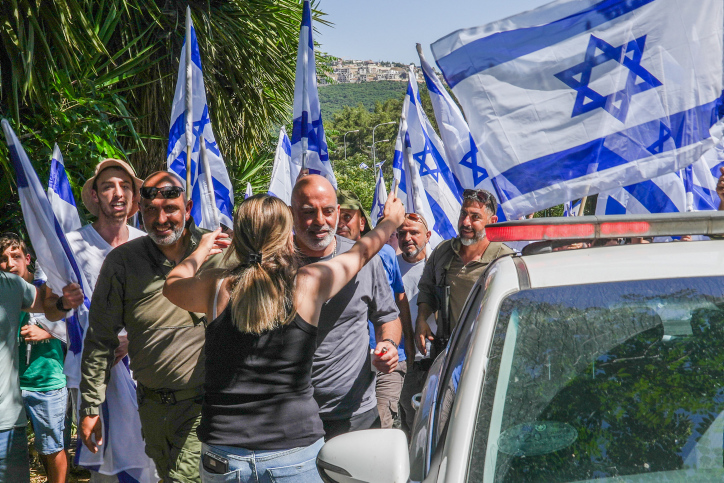In this essay, military and strategic affairs analyst Yaakov Lappin analyses the rationale behind the US ‘maximum pressure’ campaign, explores Iranian dilemmas, and presents four different scenarios for how Iran may respond.
As US sanctions take their toll on Iran’s economy, Tehran’s oil exports are dropping dramatically. Threatened by economic crisis and domestic instability, the Iranian regime has begun sending warning signals to the world – namely that it will not passively watch the countdown clock to economically-fueled domestic instability.
Nor has Iran shown willingness to diffuse the situation by moving towards US demands for a broader nuclear agreement. Iran’s answer to demands by Washington to agree to demands to improve the 2015 Joint Comprehensive Plan of Action (JCPOA) have so far been a clear ‘no.’ Iran has also refused US demands to place caps on its ballistic missile programme, or tone down its support for well-armed proxies throughout the Middle East. An additional message from Iran has been directed at Europe – if the UK, France and Germany (E3) wish to save the JCPOA nuclear agreement and prevent major damage to the global oil market and regional stability, they must urgently find ways for companies to trade with Iran and evade US penalties.
If US sanctions push Iran to the point of economic crisis, the Iranian regime can be expected to secure its survival by rallying the nation around the flag, and it is prepared to take significant risks to do this.
Waiting for US elections
In the medium term, the Iranian leadership seems determined to wait and see whether the Trump administration will be voted out of office in 2020 before making any fateful decisions. But should it decide to go down the confrontation and escalation route, the Islamic regime has two main options at its disposal. The first is destabilising the region through its proxies and through operations by the Islamic Republican Guard Corps (IRGC), as recent ‘anonymous’ and public attacks in the region have demonstrated. The second is restarting its nuclear programme. While the attack on oil tankers and the downing of the American drone have indicated Iran’s messaging and posturing regarding the first possibility, this paper will focus on the second possibility.
In recent weeks, several clear signs have emerged showing that Iran is preparing the possibility of unfreezing its nuclear programme. As part of this warning posture, Iran has put the international community on notice, telling European nations in May that if they do not find a way to shield the Iranian economy from the US’s sanctions, Iran will no longer keep to all of the requirements of the JCPOA by 7 July.
On 17 June 2019, Iran officially announced that it would breach its limit on the stockpile of enriched uranium, and that it had quadrupled the production of enriched uranium. To prove its seriousness, President Hassan Rouhani – seemingly acting on the orders of Supreme Leader Ayatollah Khamenei – announced in early May that Iran is already ceasing shipments abroad of enriched uranium and heavy water (which is used to produce plutonium), as it has been doing under the terms of the JCPOA. With Iran no longer shipping out its excess uranium, it could soon violate its 300-kilogram limit on its stockpile.
The JCPOA essentially froze Iran’s nuclear programme but did not disband it. That means that Iran has the option of restarting the programme at a time of its choosing, if it reaches the conclusion that the benefits of such a move outweigh the risks.
The timeframe in question is short. A former deputy director of the International Atomic Energy Agency (IAEA) warned during a visit to Israel on 5 June 2019 that Iran is capable, should it choose to do so, of producing enough highly enriched uranium for a nuclear bomb in six to eight months. Olli Heinonen told Israel’s Army Radio that Israel and the Gulf states ‘have a reason to worry’ about Iranian nuclear ambitions. In a meeting with Prime Minister Netanyahu on 6 June, Heinonen thanked Israel for exposing Iran’s nuclear archives in April 2018, which contained evidence of plans to manufacture five nuclear warheads at 10 kilotons each by 2003. And on 11 June, the IAEA’s director general, Yukiya Amano, confirmed that the 2015 nuclear accord was ‘under tension’ and that Iran’s ‘production rate (of uranium) is increasing’.
The objective of creating five nuclear warheads could return to the agenda, should Ayatollah Khamenei decide to kickstart the nuclear programme.
In addition, according to a 31 May 2019 report by the Institute for Science and International Security, co-written by former weapons inspector David Albright, Iran has already potentially violated the JCPOA, by installing 33 new uranium enrichment centrifuges, and testing ten of them. The report stated that ‘this number of deployed centrifuges is far in excess of what is a reasonable interpretation’ of the JCPOA’s limitations, adding that ‘the IAEA appears unable to state that Iran remains within a reasonable interpretation of the limits of this provision’. At the same time, Iran has, at the time of writing, still stuck to ‘the JCPOA’s limits for production of low enriched uranium (LEU) and heavy water’.
If Iran sticks to its threat, and from July stops observing certain commitments under the JCPOA, it could enrich uranium to higher levels than the allowed 3.67 per cent at the Natanz and Fordow enrichment facilities.
In addition, Iran has the option of resuming construction at the Arak heavy water plant, thereby rekindling the plutonium path to nuclear weapons, parallel to the uranium path. (There are two main paths to nuclear weapons production. The first involves using nuclear reactors, like the one at Arak, to convert heavy water into plutonium, which can then be used to make nuclear weapons. The second involves enriching uranium with centrifuges, a technology that Pakistani nuclear scientist Abdul Qadeer Khan helped Iran to acquire. Iran has uranium enrichment facilities at Natanz and Fordow.)
Iran’s warning signals and international responses
Iran is clearly preparing to reactivate its nuclear programme in one form or another, both as a threat, and as part of a demand from the international community to liberate it from US sanctions.
Some have responded swiftly to Iran’s warning signals. German diplomats appear to be leading the diplomatic effort to rescue the JCPOA. They visited Iran in June, seeking to mediate solutions and bridge positions between the Islamic Republic and US. While the Iranians received their German visitors cordially, they also made it clear that talks are limited only to discussing ways to save the nuclear agreement, and that there will not be discussions regarding of its missile programme or international terrorism axis. The E3 have attempted to avoid this showdown by launching a special purpose vehicle, designed to protect European companies that want to trade with Iran from US sanctions. But the sanctions have proven to be stronger than the EU’s ability to protect companies, and major European firms have called off investment plans in Iran for fear of the financial consequences.
Washington, for its part, attempted to soften its stance to some degree, with Secretary of State Mike Pompeo stating that the US was not seeking regime change in the Islamic Republic, and that it would be willing to enter talks with Tehran without preconditions. Still, Pompeo made it clear that sanctions would not ultimately be lifted unless Iran met a series of US demands. As each side marked out their diplomatic posture, more aggressive military postures were taking shape. The US beefed up its presence in the Persian Gulf, deploying 2,500 troops to the area on in May and June. Earlier, a carrier strike group – composed of the USS Lincoln, carrying 44 Super Hornet fighter jets – accompanied by warships made their way to the Gulf. In addition, the Pentagon deployed additional personnel, and four B-52 bombers to US Centcom’s Al-Udeid airbase in Qatar. Patriot air defense batteries have also been deployed to the area. Iranian officials issued threats about the consequences of a war with the US.
Taking Iran’s threats at face value means concluding that the longer it is pressed by US sanctions, the more likely Tehran will be to take steps to resume its nuclear programme, and the more likely it will be to activate proxies to attack America’s allies in the region. A further escalation could see Iran orchestrating attacks on US forces, or direct IRGC attacks.
While Ayatollah Khamenei exhibited short-term flexibility by allowing the reformist government, headed by President Rouhani, to negotiate a deal in 2015, thereby rescuing Iran from economic sanctions he remains determined to obtain nuclear weapons as a long-term strategic goal for Iran. And this time, it appears that Khamenei, backed by the IRGC, is unwilling to consider any new, broader nuclear agreement, and has thus far displayed a refusal for any further flexibility.
Events come too soon for Tehran
Still, it is clear that Iran is not enthusiastic about the timing of these events. Iran seemed content to freeze its nuclear programme for several years, and focus its resources on building proxy war machines in the Middle East. This strategy would have enabled Iran to promote its hegemonic goals, while encircling Israel with proxies, based on an Iranian hope that Jerusalem would be deterred from launching future military strikes on Iran’s nuclear programme. Under this plan, just as the proxies would protect the nuclear programme in the near-term future, the roles would be reversed in the longer-term. Iran could provide a nuclear umbrella for its proxy forces, giving them confidence to step up attacks on Israel in the future. Former Israeli National Security Advisor, Maj. Gen. (res.) Yaakov Amidror, described this Iranian strategy as “the North Korea’s doctrine,” referring to the fact that South Korea is deterred from taking action against the North because of its nuclear arsenal. “The Iranians are building up these capabilities throughout the region so we’ll lose our flexibility of action. We need to do everything to prevent that, even at the risk of war,” he said.
Now, with its regional projects far from complete, Iran is signalling its willingness to restart its nuclear programme. This is not in line with Iran’s plans or short-term interests – unless the countdown clock to domestic instability has begun running out. If popular protests and economic crisis seem imminent, the calculations of Iran’s regime will likely change dramatically.
These events have also affected regional states that previously assessed that the nuclear deal could provide eight to ten years of relative quiet on the Iranian front. These states are now finding themselves bracing for the possibility of Iranian nuclear breakout, or an ‘interim’ Iranian reactivation of the programme.
Four scenarios
There appear to be four central scenarios possible going forward.
First, Iran continues to send out warning signals and prepares the ground further for reactivating its nuclear programme, while waiting to see the outcome of the US 2020 elections, and without announcing a full departure from the JCPOA. Remaining in the JCPOA together with the E3, as well as Russia and China, would enable Iran to try and isolate Washington by painting it as a violator of international agreements. But this diplomatic point-scoring is only useful for Iran so long as it does not face an economic meltdown. As a result, the likelihood of this scenario largely depends on Iran’s ability to use the grey market to export oil, and on the EU’s ability to find viable ways for companies to invest in Iran and trade with it without facing US penalties. This is why Iran is pressuring Europe – through diplomacy and escalatory moves on the ground – to find such ways.
Assuming that Khamenei – or any successor with similar ideological leanings – is Supreme Leader in two years, the outcome of the Iranian presidential elections in 2021 will not significantly impact Iran’s nuclear direction. Trump’s exit from the nuclear deal in 2018 led to the collapse of the reformist Iranian camp’s premise that diplomacy can be used to save the Iranian economy. In light of this, the Khamenei-supported conservative line, also backed by the IRGC, has taken back control of Iran’s posture.
In a second scenario, which appears unlikely at this time, indirect US – Iran talks lead to a diplomatic breakthrough, and a broader agreement is reached. Under this improved agreement, problematic sunset clauses in the current JCPOA are removed. A better deal would place limitations on Iran’s ballistic missile programme, as well as reach agreements on Iran’s regional conduct, resulting in a lifting of US sanctions. The failure of indirect diplomacy between Tehran and Washington to reach any agreement thus far is a good indication of the very large gap that currently separates the two sides.
The third scenario, which might occur if Trump is re-elected and the US maintains its biting sanctions with no diplomatic breakthrough on the horizon, is that Iran opts for a version of a partial reactivation of its nuclear programme. This could see Iran enrich uranium to the 20 per cent level, and may include an Iranian withdrawal from the JCPOA, alongside continued rhetorical commitment to the Non-Proliferation Treaty and to the IAEA. Responses to this development will likely vary widely between the US, Europe, Russia, and China. While no one in the international community is interested in seeing a nuclearised Iran, Iran could try to take advantage of tensions between the US and Europe, as well as between the US, Russia, and China, by taking vague action that is open to interpretation. This could weaken the effect of US sanctions. In addition, the Iranian leadership could partially restart its nuclear programme based on an assessment that Trump is reluctant to get involved in another major Middle Eastern military conflict, and that he desires to disengage from the region. At the same time, it should be noted that even a partial reactivating of Iran’s nuclear program will likely speed up efforts by Iran’s regional rival, Saudi Arabia, to obtain its own nuclear weapon.
The fourth scenario could see Iran’s domestic stability become threatened due to heavy economic pressure. In this case, the regime could opt for full nuclear breakout, in either public or covert form. Although this move, assuming it is detected, seems certain to trigger a military confrontation with either the US or Israel, the Iranian regime could calculate that it would survive an air campaign against it, and that this would therefore be preferable to facing an internal revolution fueled by economic crisis. In other words, because a large-scale domestic revolt would likely threaten the regime’s existence, Iran may even prefer a regional war – including a clash with the US – over risking economic collapse and a revolution. Central to this calculation would be the premise that ordinary Iranians, even those who are deeply hostile and critical to their regime, would rally around the flag in the face of conflict against foreign elements. There has been no sign of a US willingness to embark on the mammoth mission of a ground invasion of Iran – which would be the only assured military path to destroying the regime, as opposed to greatly damaging it in an air campaign.
An Iranian decision to go for a full nuclear breakout would likely set off a region-wide clash involving Iran and its proxies facing off against Israel and Sunni Gulf states. Such a scenario could see Hezbollah respond to an Israeli or an American attack on Iran’s nuclear program by firing large quantities of projectiles from launch sites in Lebanon at Israel, and an Israeli counter-offensive, which would likely involve both a ground offensive and large-scale airstrikes. Saudi Arabia and Iran could also become involved in intense exchanges of missile fire. Israel, for its part, has made it clear that even if the US decides not to strike Iran’s nuclear program, Jerusalem would do so if it saw the need, with Prime Minister Netanyahu recently reiterating Israel’s determination to take any action necessary to avoid a nuclear-armed Iran. For the Iranian regime, such an outcome – while very far from desirable – is not fully unthinkable. It would likely succeed in rallying Iranians around the flag and decrease the chance of domestic instability resulting in the regime collapsing.
Underlying these scenarios is a lengthy period of uncertainty and high tension, conditions that make miscalculation and inadvertent likelier. The potential for sudden and unpredictable escalations makes calculated brinkmanship a decidedly risky business.

